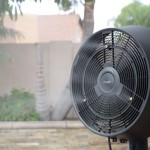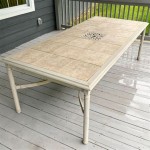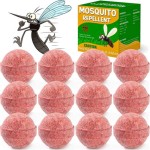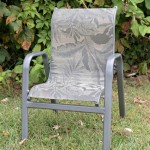How to Clean Concrete Patio of Mold
Concrete patios are a popular outdoor feature, offering a durable and versatile space for relaxation and entertainment. However, concrete is porous, making it susceptible to the growth of mold, mildew, and algae, especially in damp or shaded environments. The presence of these organisms not only detracts from the aesthetic appeal of the patio but can also pose health risks and compromise the structural integrity of the concrete over time. Regular cleaning is essential to maintain a clean, safe, and attractive outdoor space. This article provides a comprehensive guide to effectively cleaning mold from a concrete patio, covering various methods and precautions.
Identifying Mold on Concrete
Before initiating any cleaning process, it is crucial to accurately identify the growth as mold. Mold typically appears as dark, often green, black, or brown, splotches on the concrete surface. It might also present as a fuzzy or slimy texture. While some discoloration might simply be dirt or grime, mold infestations often persist even after a superficial cleaning. A musty odor is another strong indicator of mold presence. Differentiating mold from algae or mildew is important, as the treatment approaches might slightly differ. Algae often appears as a green, slimy film, while mildew typically presents as a white or gray powdery substance.
Distinguishing between mold, mildew, and dirt is critical for selecting the appropriate cleaning method. Simple dirt and grime can often be removed with soap and water and a scrub brush. Mildew, being a surface growth, is usually easier to remove than mold, which can penetrate deeper into the concrete's pores. Mold, with its characteristic dark staining and potential for deep penetration, requires a more aggressive cleaning approach. If unsure, it is always prudent to treat the affected area as if it were mold to ensure thorough removal and prevent recurrence.
Essential Tools and Materials
Successful mold removal from a concrete patio requires the right tools and materials. The specific items needed will depend on the chosen cleaning method, but a general list includes:
Stiff-bristled scrub brush:
This is essential for agitating the cleaning solution and dislodging mold from the concrete surface. A brush with a long handle can minimize bending and strain during the cleaning process.Garden hose with a spray nozzle:
Used for rinsing the concrete surface before and after cleaning. A high-pressure nozzle can be beneficial for removing loose debris and mold particles.Bucket:
For mixing cleaning solutions.Protective eyewear and gloves:
To protect eyes and skin from potentially irritating or corrosive cleaning agents.Respirator or dust mask:
To prevent inhalation of mold spores and cleaning solution particles.Cleaning solutions:
Options include bleach, vinegar, trisodium phosphate (TSP), or commercial mold and mildew removers specifically designed for concrete.Pressure washer (optional):
Can significantly expedite the cleaning process but requires careful usage to avoid damaging the concrete surface.Pump sprayer (optional):
For applying cleaning solutions evenly and efficiently over large areas.
The selection of the appropriate cleaning solution is paramount. While bleach is a common and effective option, it can be harmful to plants and the environment. Vinegar is a more environmentally friendly alternative but might be less effective for heavy mold infestations. TSP is a strong cleaning agent but requires careful handling and disposal. Commercial mold and mildew removers are often formulated with specific ingredients to target mold growth on concrete and may offer a more targeted and effective solution. Always read and follow the manufacturer's instructions carefully when using any cleaning product.
Cleaning Methods for Concrete Patios
Several methods can be employed to clean mold from a concrete patio, each with its own advantages and disadvantages. It is important to consider the severity of the mold infestation, the size of the affected area, and personal preferences when choosing a cleaning method.
Bleach Solution
A bleach solution is a potent disinfectant and mold killer, ideal for treating severe infestations. To prepare the solution, mix one part bleach with three parts water in a bucket. Before applying the solution, thoroughly wet the concrete patio with water to prevent the bleach from being absorbed too quickly and potentially damaging the concrete. Apply the bleach solution to the affected areas, ensuring complete coverage. Allow the solution to sit for 10-15 minutes to penetrate the mold. Use a stiff-bristled scrub brush to vigorously scrub the concrete surface, dislodging the mold. Rinse the patio thoroughly with clean water, removing all traces of the bleach solution. Exercise caution when using bleach, as it can discolor clothing, irritate skin, and harm plants. Ensure proper ventilation and wear appropriate protective gear.
While effective, bleach can be harsh on the environment and can weaken the concrete if used improperly or too frequently. It is crucial to thoroughly rinse the patio after cleaning to remove all traces of bleach. Consider covering nearby plants with plastic sheeting to protect them from potential damage. Dispose of any leftover bleach solution responsibly. Frequent use of bleach is not recommended, and alternative cleaning methods should be explored for routine maintenance.
Vinegar Solution
Vinegar is a natural and less toxic alternative to bleach. Its acidity can effectively kill mold and prevent its regrowth. White distilled vinegar is typically used for cleaning purposes. Pour undiluted white vinegar into a spray bottle and apply it liberally to the mold-affected areas of the concrete patio. Allow the vinegar to sit for at least 30 minutes to allow it to penetrate the mold. Use a stiff-bristled scrub brush to scrub the area vigorously. Rinse the patio thoroughly with clean water. Vinegar leaves a distinct odor, but it dissipates quickly. This method is suitable for mild to moderate mold infestations and is a good option for those seeking an environmentally friendly cleaning solution.
Vinegar might not be as effective as bleach for severe mold infestations, but it is a safer alternative for use around plants, pets, and children. The acidity of vinegar can also help to dissolve mineral deposits and stains on the concrete surface. For stubborn mold stains, the vinegar can be left to soak for a longer period, even overnight, before scrubbing and rinsing. Repeat the process if necessary to completely remove the mold. While generally safe, it is still advisable to wear gloves when using vinegar, especially for prolonged exposure.
Trisodium Phosphate (TSP) Solution
Trisodium phosphate (TSP) is a powerful cleaning agent that can effectively remove mold, mildew, and grease from concrete surfaces. However, TSP is a strong chemical and should be handled with caution. To prepare the solution, dissolve ½ cup of TSP in 2 gallons of warm water. Wear protective gloves, eyewear, and a respirator when working with TSP. Apply the solution to the mold-affected areas using a scrub brush or a pump sprayer. Allow it to sit for 15-20 minutes. Scrub the concrete vigorously with a stiff-bristled brush. Rinse the patio thoroughly with clean water. Before using TSP, ensure it is permitted in your area, as some regions have restrictions on its use due to environmental concerns. Dispose of the used solution properly according to local regulations.
TSP is highly effective at removing stubborn mold stains and is particularly useful for cleaning heavily soiled concrete surfaces. However, its strong alkalinity can be corrosive and irritating to the skin and respiratory system. It is crucial to follow safety precautions carefully when using TSP. Avoid contact with skin and eyes, and ensure adequate ventilation. TSP can also damage painted surfaces, so protect any painted areas near the concrete patio. Proper disposal of TSP-containing wastewater is essential to prevent environmental pollution. Consider alternative cleaning methods if environmental concerns are a priority.
Commercial Mold and Mildew Removers
Numerous commercial mold and mildew removers are specifically formulated for concrete surfaces. These products often contain a blend of chemicals designed to effectively kill mold and prevent its regrowth. Always read and follow the manufacturer's instructions carefully when using commercial mold and mildew removers. Apply the product to the affected areas according to the instructions, typically using a pump sprayer or a brush. Allow the product to sit for the recommended amount of time. Scrub the area with a stiff-bristled brush. Rinse the patio thoroughly with clean water. Choosing a commercial product designed for concrete can often provide the most targeted and effective solution for mold removal.
Commercial mold and mildew removers vary in their composition and effectiveness. Some products are more environmentally friendly than others. Research different products and choose one that is appropriate for the specific type of mold and the severity of the infestation. Consider factors such as biodegradability, toxicity, and ease of use when selecting a commercial mold and mildew remover. Always test the product on a small, inconspicuous area of the concrete patio before applying it to the entire surface to ensure it does not cause discoloration or damage. Dispose of the product and any leftover solution according to the manufacturer's instructions and local regulations.
Pressure Washing
Pressure washing can be an effective method for removing mold and grime from concrete patios, but it requires caution to avoid damaging the concrete surface. Use a pressure washer with an adjustable nozzle and start with a low-pressure setting. Hold the nozzle at a slight angle to the concrete surface and move it in a sweeping motion. Avoid focusing the pressure washer on a single spot for too long, as this can etch or damage the concrete. Before pressure washing, pre-treat the affected areas with a cleaning solution, such as a bleach solution or a commercial mold remover, to loosen the mold. After pressure washing, rinse the patio thoroughly with clean water. Pressure washing is best suited for large areas and stubborn mold infestations, but it is important to use it carefully to prevent damage to the concrete.
The optimal pressure setting for pressure washing a concrete patio depends on the condition of the concrete and the severity of the mold infestation. Start with a low-pressure setting and gradually increase it until the mold is effectively removed without damaging the concrete. Use a wide-angle nozzle to distribute the pressure evenly and prevent etching. Avoid pressure washing near delicate plants or structures, as the high-pressure spray can cause damage. Always wear protective eyewear and clothing when pressure washing. Pressure washing can also spread mold spores, so consider taking precautions to minimize airborne dispersal, such as wetting the area before and after pressure washing.
Preventing Mold Regrowth
After successfully cleaning the mold from the concrete patio, it is crucial to take steps to prevent its regrowth. The following measures can help to create an environment that is less conducive to mold growth:
Improve drainage:
Ensure that the patio is properly sloped to allow water to drain away quickly. Repair any cracks or depressions where water can accumulate.Increase sunlight exposure:
Trim trees or shrubs that are blocking sunlight from reaching the patio. Sunlight helps to dry the concrete and inhibit mold growth.Regular cleaning:
Clean the patio regularly with a mild detergent and water to remove dirt, debris, and organic matter that can provide a food source for mold.Apply a concrete sealer:
Sealing the concrete can help to prevent water from penetrating the surface and creating a damp environment that promotes mold growth. Choose a sealer that is specifically designed for outdoor concrete surfaces.Address moisture sources:
Identify and repair any sources of moisture that are contributing to mold growth, such as leaky pipes or overflowing gutters.
Regular maintenance is key to preventing mold regrowth. Sweep the patio regularly to remove leaves, twigs, and other debris that can trap moisture. Clean up spills promptly to prevent them from soaking into the concrete. Consider using a leaf blower to remove standing water after rain. Applying a mold-resistant sealant every few years can provide long-term protection against mold growth. By taking proactive steps to prevent mold regrowth, homeowners can enjoy a clean and attractive concrete patio for years to come.

How To Remove Mold From Concrete Comprehensive Guide

Diy Miracle Concrete Patio Cleaner I Should Be Mopping The Floor

How To Remove Mold From Concrete Cleaning Tips Network

Removing Mold From Concrete How To Remove And Mildew

Diy How To Clean Ugly Mold And Mildew Stains Off Of Concrete Even When A Pressure Washer Can T

How To Clean Concrete Patio Archives Wet Forget Blog

How To Clean Mold From Concrete And Keep It Coming Back

Best Way To Clean A Concrete Patio Chalking Up Success

How To Clean A Patio With Wet Forget Outdoor Blog

How To Clean A Concrete Patio








